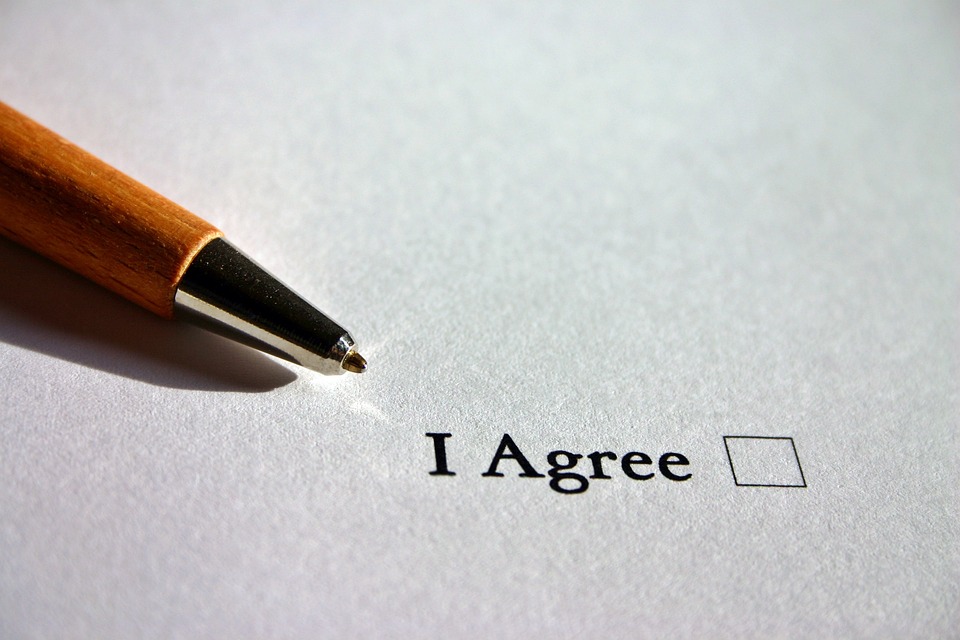A sales and purchase agreement is a binding legal contract that outlines all the agreed-upon conditions of the buyer and seller of a property. The contract makes the provision for critical terms like the closing date, amount of deposit and any unusual circumstances that might necessitate the agreement’s cancellation.
So, if you are involved in real estate and want to know how to draft a purchase and sale agreement, make sure you read the whole article (even the second part!)
Phase 1: Initiation of the Purchase and Sale Agreement

Make The Document Look Professional
The purchase and selling agreement should be typed properly so that it is readable. Set the font to a legible size and style if you don’t want the opposing party to allege that you buried information by using small fonts. Many individuals choose Times New Roman 12 point.
Add A Title
The title should be centered at the top of the page, between the left and right margins. Title your paper “Agreement to Purchase Real Estate” or “Purchase and Sale Agreement.”
Determine Who Is Involved In The Deal
At the outset of any agreement, you must identify the buyer and seller. You might use blank lines for their names or include a short text.
Include The Legal Description Of The Property
You must correctly identify the property in your agreement, so locate the legal description of the property on the deed. You may obtain a copy of the deed from the Recorder of Deeds office in your county.
Phase 2: Explicitly Explaining the Purchase Price and Payment

Mention The Purchasing Price
“The purchasing price shall be [insert price],” you might write. After the earnest money is credited, the remaining amount is due at closing by the Purchaser.”
Identify Any Earnest Money That Has Been Deposited
An earnest money deposit is a type of security deposit. It is how you demonstrate to the seller that you are serious about purchasing the home. A potential buyer may pretend to be interested in any number of properties without putting down earnest money, thereby eliminating them from the market. Include a sentence stating the amount of earnest money to be deposited as well as the deadline for depositing it.
Explain The Funding
You must identify the purchaser’s source of finance and request documentation that they are eligible for the loan. A letter from the purchaser’s bank or lender is usually adequate verification.
List The Products That Are For Sale
Personal property or “fixtures” may be included in the purchase of a home. Fixtures are enhancements done to the property that cannot be removed, such as built-in bookcases or a fireplace.
List The Goods That Are Not Included In The Sale
If the seller is taking something with them, make sure to include it in the buy and sale agreement. You might wish to bring your kitchen appliances, for example. If so, make a note of it.
Indicate Whether The Transaction Is Contingent On The Buyer Selling Their Existing House
This is a critical provision. It is sometimes impractical to expect someone to buy a property if they are unable to sell their present home. By incorporating this condition, the buyer can back out of the deal if they are unable to sell their house. Alternatively, the offer might be made without the buyer selling their house.
Phase 3: Closing Costs Explained

Specify The Closing Charges That The Seller Must Bear
In most cases, the seller must pay off any outstanding loans or liens. In addition, the seller pays real estate commissions, title insurance policy benefits with the buyer, and the amount on any leased goods that remain on the property. At closing, the seller must also transfer any current rental or lease deposits to the buyer.
Describe The Closing Charges That The Buyer Must Bear
The buyer can pay the recording fees for the deed and deed of trust, the association transfer fees, the transfer taxes, the insurance (hazard and other), the purchaser’s settlement fees, and its own loan expenditures.
Explain Who Is Responsible For Paying Taxes
The house might be sold in the midst of the fiscal year. As a result, you may choose to prorate the taxes. You should specify whether taxes will be prorated and how they will be prorated.
For more information on phase 4, 5 and 6, come back for part 2!




[…] can include a clause in which the buyer acknowledges that he or she has been advised to have a survey conducted. If the buyer decides not to have a […]